SEO is one of the most important aspects of a successful online presence. If you’re not doing everything you can to optimize your website and content, you’re losing out on potential customers and revenue.
The first common SEO mistake is site speed. The faster your site, the more Google will favor it. Especially now, with the page experience ranking factor slowly rolling out. It’s important to work on your site speed to keep your pages in the search results. There’s a very useful tool from Google itself to check your site speed: Google PageSpeed Insights. This tool gives you an overview of what aspects you can improve on to boost the speed of a particular page.
A quick win and a recommendation we frequently give is to optimize your images. A lot of websites have images that are relatively large, which take a lot of time to load. This makes your website slower than it needs to be. Resizing your images can speed up the loading time.
Another common mistake is failing to optimize your title tags and meta descriptions. These are two of the most important elements of on-page SEO, yet so many businesses don’t take the time to do it right. Make sure your title tags are unique and descriptive, and include your target keyword. Your meta descriptions should also be well-written and include your target keyword. Keep in mind that these elements show up in the search results, so they need to be compelling enough to make people want to click through to your website.
The Most Common SEO Mistakes Big Brands Commit
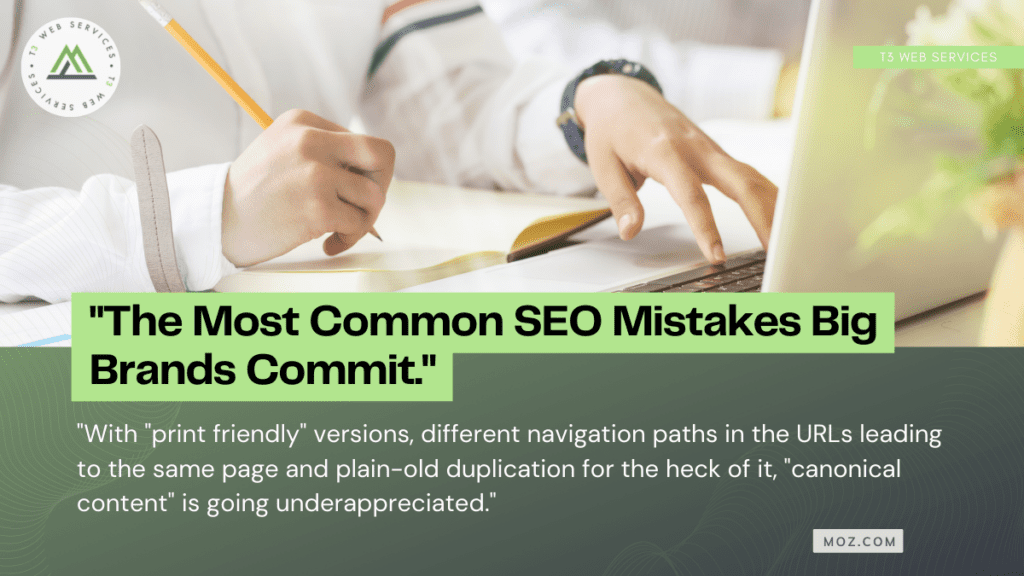

- Un-Spiderable Navigation
From Flash links to Javascript calls to drop-downs and search box interfaces, there’s dozens of sites that fall victim to a lack of crawling due to their spider un-friendliness. - Disregard for Relevant Keywords
Out of the Fortune 500, I’d estimate that only a scant few dozen are actually implementing proper keyword research and targeting – the rest leave it to a “creative ad writer” to determine page content and title tags. - Flash & Image-Based Content
In addition to navigation, the content that’s most critical to search engines is frustratingly hidden in files that spiders can’t see. Despite the promises from years ago that engines would eventually be able to spider Flash content (or read text in images), it seems we’re still many years away.

https://moz.com/blog/the-most-common-seo-mistakes-big-brands-commit
WordPress Gutenberg 14.2 Offers Better User Experience
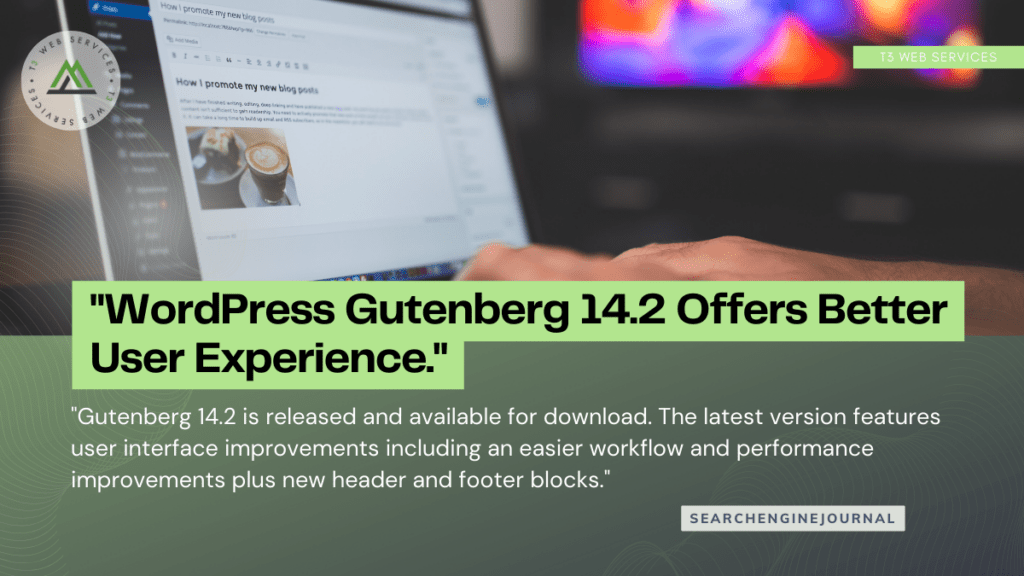

Gutenberg now features a more intuitive writing flow.
Three improvements:
- “The sibling and line inserters now feature a more natural animation effect.
- Selecting multiple blocks is now more visually consistent.
- The block inserter is now hidden when the user is typing, reducing visual clutter.”
A bug was fixed in the Enhanced List Block feature.
The feature which was introduced in August 31, 2022 for Gutenberg 14.0 contained a performance issue when list items were nested within each other.
WordPress explains the problem and the fix:
“So, if a List item was inside of a List that was inside of another List block, that block would re-render 3 times! This problem has now been fixed and the initial load performance of the editor should be improved.”

https://www.searchenginejournal.com/wordpress-gutenberg-14-2-offers-better-user-experience/466652/
More Helpful Content Dos and Don’ts for New Google Update
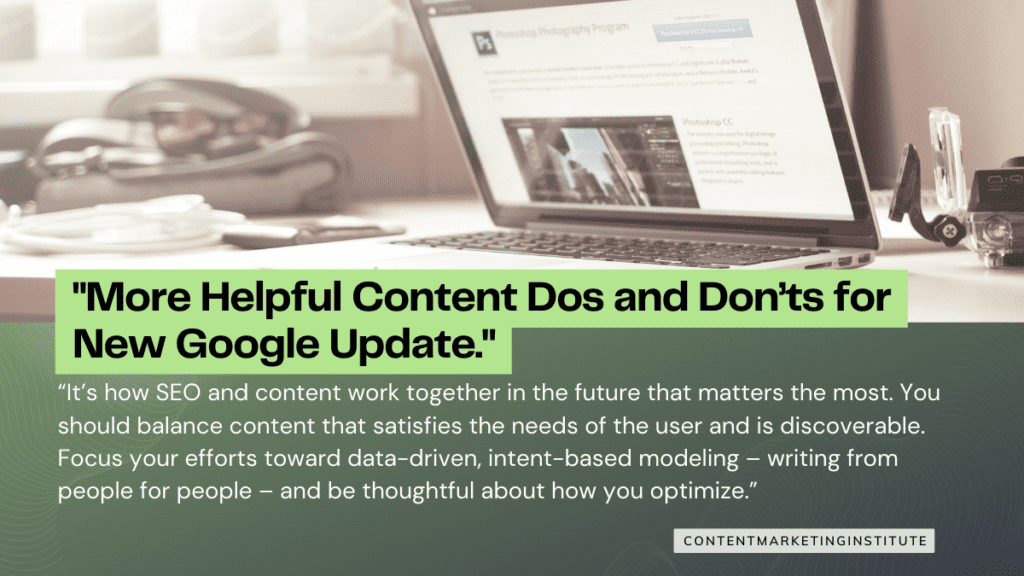

Given the update’s sitewide impact, any domain with a high amount of low-quality content is at risk of seeing a decline in its search rankings. The update uses machine learning to determine whether a site’s content is helpful, and sites found lacking in this regard will be penalized accordingly.
This update is yet another reminder that quality should always be a top priority for anyone looking to improve their search rankings.
5 dos to create helpful content
To produce helpful content, you need to become more thoughtful about understanding your target audience, their search intent, who you target, and what you create.
First, think about how audiences become frustrated with sites and, specifically, content. They don’t like:
- Visiting web pages that do not satisfy their wants and needs
- Pages with content lacking insights or value
- Content that looks like a machine created it
- Content that does not give answers nor shows empathy and/or added value
- Content primarily targeted to search engine ranking with no relevance

https://contentmarketinginstitute.com/articles/google-helpful-content-dos-donts
How to Know if Your Facebook Ads Will Work
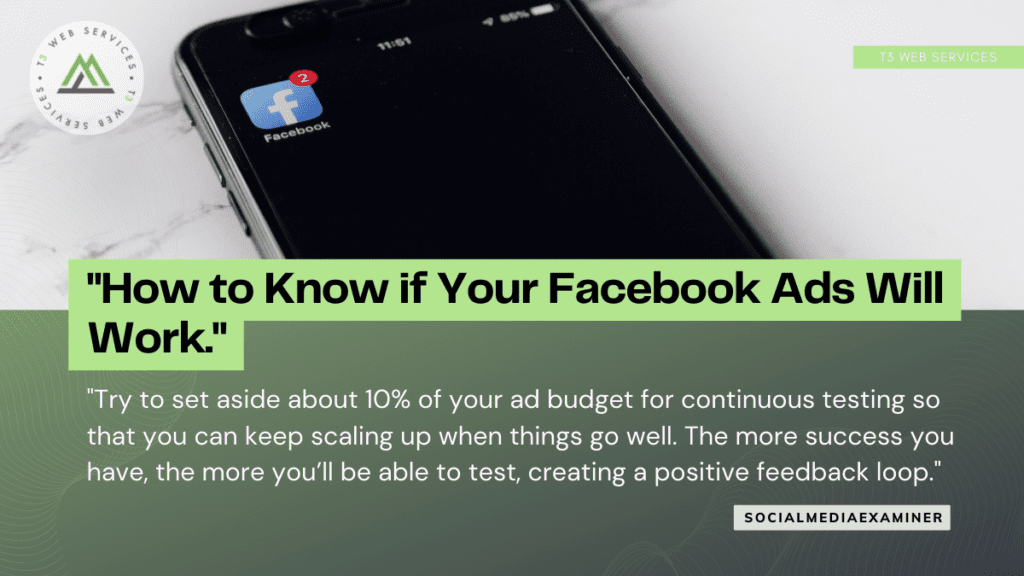

To run successful ads, you need to know what works. To know what works, you have to test… and you have to test enough.
Once you have some solid data from that first testing round, you can start scaling up. Spend the majority of your budget on tactics you know are successful but always have some money set aside to keep testing.
You need to get really comfortable with Facebook’s Insights and Analytics. At a high level, that data will tell you how your Facebook ads are performing compared to other platforms.
At a more zoomed-in level, tracking your Facebook metrics will help you keep your ads effective over time. Even if you test a strategy to perfection, the same formula for success may not work 6 months down the line.
Facebook’s own metrics are valuable but they’re not the whole picture. You’ll also need:
- The Facebook pixel to track activity on your website and match it to your Facebook presence.
- The Facebook Conversions API to track conversions on your website that get missed by the pixel.
- UTMs so you can use Google Analytics to check and corroborate which links people click on from Facebook.

https://www.socialmediaexaminer.com/how-to-know-if-your-facebook-ads-will-work/
Content at a Crossroad: What Will It Take To Drive Content Marketing Forward?


- Aspire, but have a plan to see ideas through: While aspiration is a significant first step, you must develop the muscle memory to see your ideas to completion. Allocate the time, resources, and effort to execute the ideas.
- Operate in real-time: The set-it-and-forget-it mentality doesn’t work anymore. Think about how you can change your business to deliver products in real time.
- Be resourceful: Experimenting with content is not about how much money is available. It’s about how well you use the assets, talent, and resources you have.
- Operationalize innovation: Look for models you can reverse-engineer to guide the development of your ideas and create guardrails and structures that make innovation more manageable.
- Be curious: If you build the skill of curiosity, you can foster environments that create change.
- Don’t give up: A no from stakeholders doesn’t mean your idea is bad. It just means it’s not the right fit under the current situation. Keep workshopping it. If all else fails, consider developing it elsewhere or on your own.

Five Strategies You Can Use Right Now for Better Email Marketing Personalization
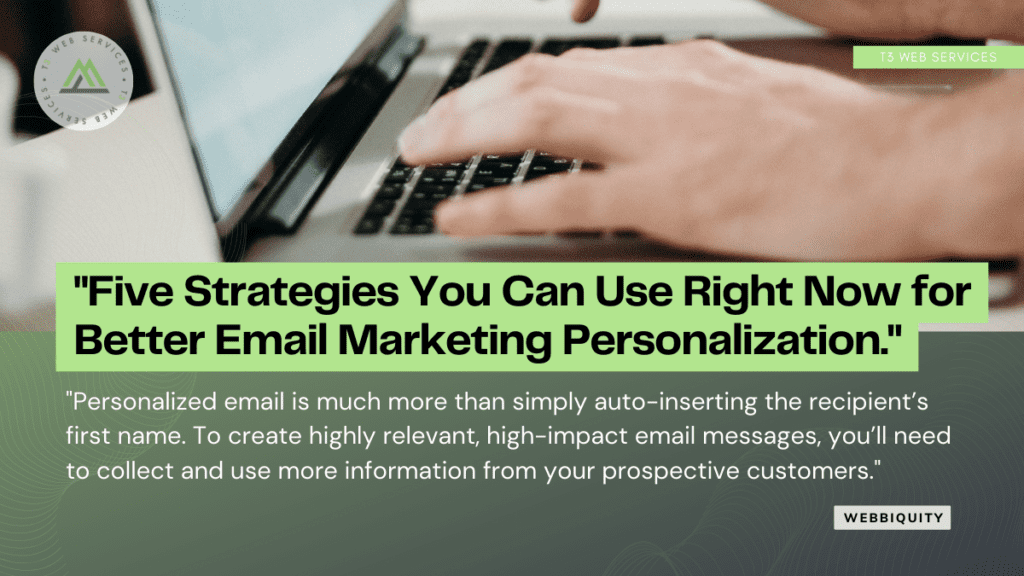

1. Segment your subscribers.
Building a carefully segmented list is essential for a brand to improve audience targeting and increase sales. These lists help the brands group recipients by important attributes (age, location, work role, preferences, etc.). By categorizing subscribers, brands can easily send relatable emails to each type of user.
Every popup, feedback form, subscription, and newsletter signup form is valuable for collecting data to help segment your customers based on their activity, demographics, psychographics, and professional characteristics. Marketing automation platforms can help with segmenting users based on different criteria.
With the help of marketing tools that provide advanced segmentation features, you can efficiently perform customer segmentation.
2. Customize subject lines.
Customizing subject lines using user data can increase open rates. It’s very important because using personalization in subject lines can increase open rates by 22%. Personalized subject lines can be developed when you’ve collected rich data on subscribers.

These Are the Areas Marketers Think Will Be Most Important Over the Next 2 Years
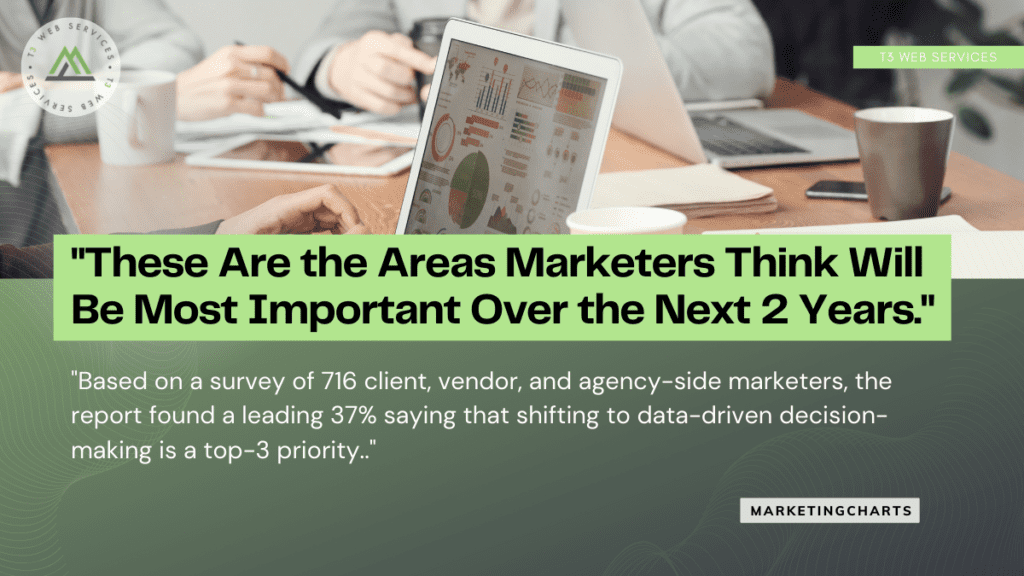

Based on a survey of 716 client, vendor, and agency-side marketers, the report found a leading 37% saying that shifting to data-driven decision-making is a top-3 priority. This was closely followed by the 35% pointing to an improvement of the customer experience and customer journey management as a top-3 priority.
Others tabbed as top-3 areas of importance in the coming years included maximizing marketing effectiveness and optimizing budgets (30%), improving understanding of the customer (24%) and brand building and enhancing brand loyalty (23%). At the bottom of the list were improving personalization and targeting capabilities (14%) and integrating and benefiting from automation, AI and machine learning (also 14%).
A Need for Empathy
With CX improvement high on the list of areas of importance, the survey finds 6 in 10 respondents agreeing that the ability to navigate changing consumer behaviors and CX expectations will be very significant to success.
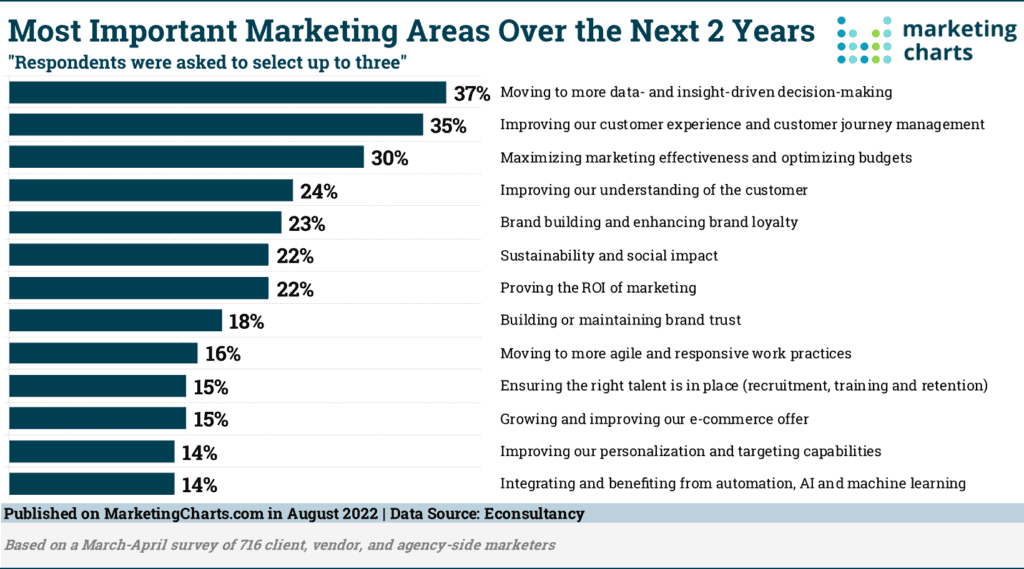



Leave a Reply